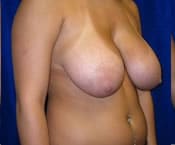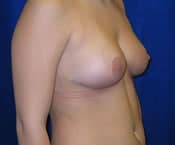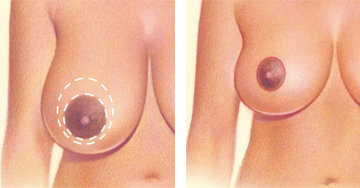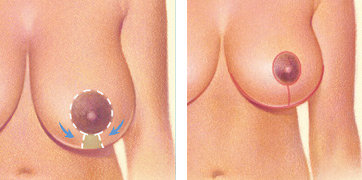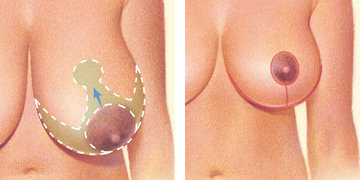Breast Reduction
Large, pendulous breasts may cause a woman to potentially experience various medical problems caused by the excessive weight of the breast tissue. Problems with posture, skeletal deformities, back and neck pain, skin irritations and nerve irritations of the fingers are common with this condition. Bra straps often leave indentations in the shoulder area. Many women, especially teenage girls, are very self-conscious if they have unusually large breasts. With breast reduction surgery, women of all ages are able to have breasts that are better shaped and in proportion. Breast reduction (reduction mammoplasty) removes fat, glandular tissue, and excessive skin, resulting in smaller, lighter and firmer breasts that are better-shaped in proportion to rest of the body. Dr. Medalie typically performs breast reduction as an outpatient procedure in Cleveland, Ohio. *Plastic Surgery results can vary and are not guaranteed
What are the steps of a breast reduction procedure?
Breast reduction surgery is usually performed through incisions on your breasts with surgical removal of the excess fat, glandular tissue and skin.
In some cases, excess fat may be removed through liposuction in conjunction with the excision techniques described below. If breast size is largely due to fatty tissue and excess skin is not a factor, liposuction alone may be used in the procedure for breast reduction.
The technique used to reduce the size of your breasts will be determined by your individual condition, breast composition, amount of reduction desired, your personal preferences and the surgeon’s advice.
Step 1 – Anesthesia
Medications are administered for your comfort during breast reduction surgery. The choices include intravenous sedation and general anesthesia. Your doctor will recommend the best choice for you. Dr. Medalie typically uses light general anesthesia on an outpatient basis.
Step 2 – The incision
Incision options include:
- A circular pattern around the areola
The incision lines that remain are visible and permanent scars, although usually well concealed beneath a swimsuit or bra.
- A keyhole or racquet-shaped pattern with an incision around the areola and vertically down to the breast crease
- An inverted T or anchor-shaped incision pattern
Step 3 – Removing tissue and repositioning
After the incision is made, the nipple (which remains tethered to its original blood and nerve supply) is then repositioned. The areola is reduced by excising skin at the perimeter, if necessary.
Underlying breast tissue is reduced, lifted and shaped. Occasionally, for extremely large pendulous breasts, the nipple and areola may need to be removed and transplanted to a higher position on the breast (free nipple graft). This is very rare and almost never used by Dr. Medalie.
Step 4 – Closing the incisions
The incisions are brought together to reshape the now smaller breast. Sutures are layered deep within the breast tissue to create and support the newly shaped breasts; sutures, skin adhesives and/or surgical tape close the skin. Incision lines are permanent, but in most cases will fade and significantly improve over time. Dr. Medalie always uses sutures that dissolve under the skin.
Step 5 – See the results
The results of your breast reduction surgery are immediately visible. Over time, post-surgical swelling will resolve and incision lines will fade. Satisfaction with your new image should continue to grow as you recover.


